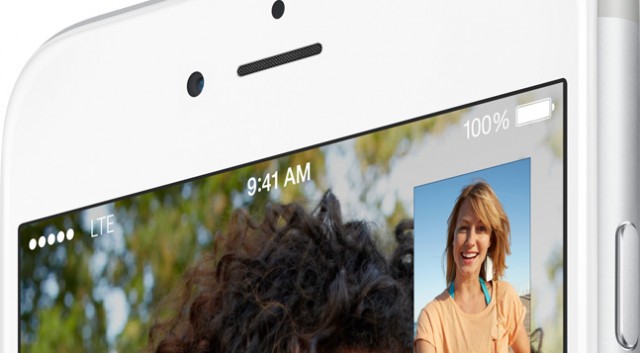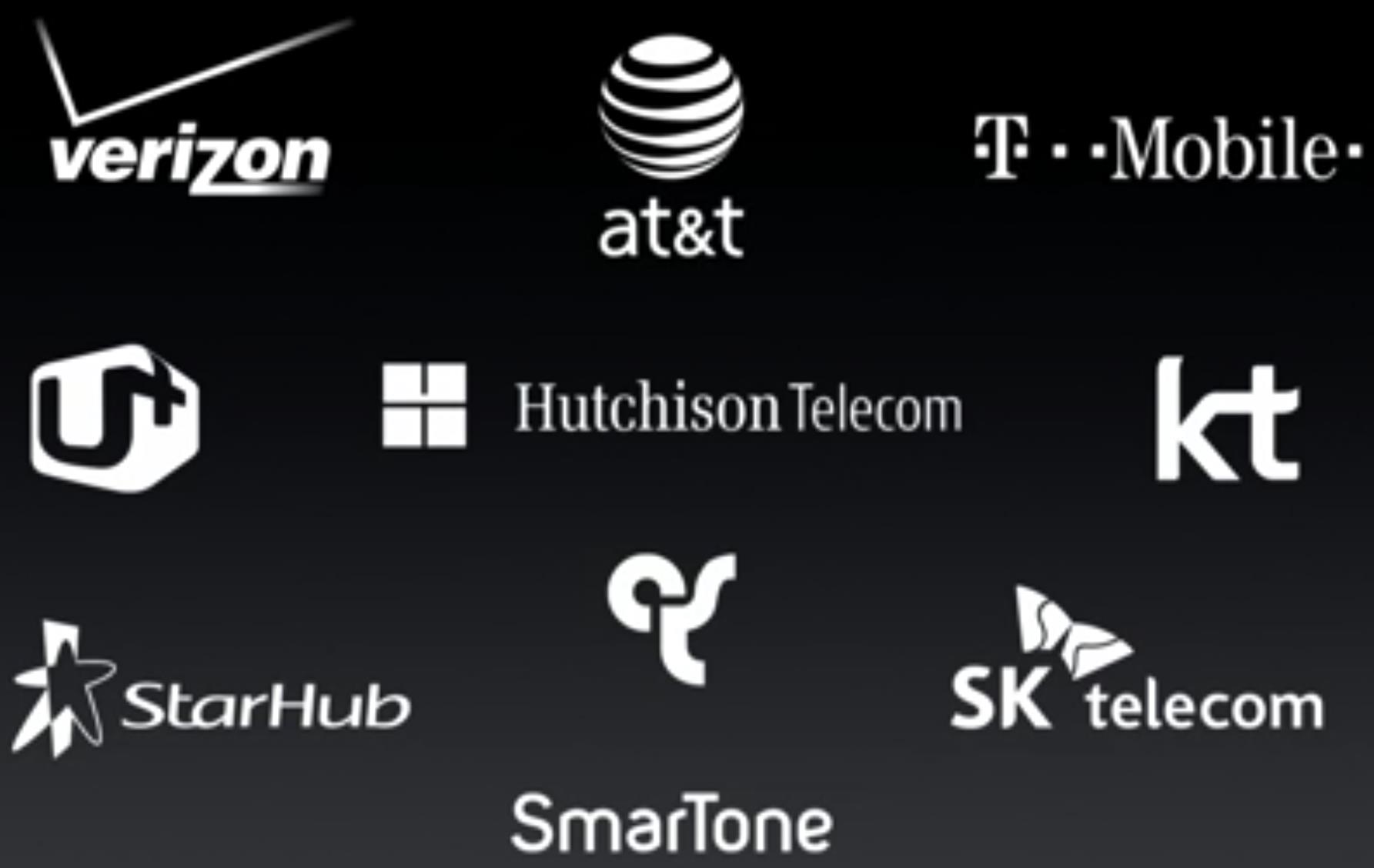
iPhone 6 and iPhone 6 Plus: The world’s best phones for wireless and LTE connectivity
With every release of the iPhone, Apple dramatically improves the wireless radio capabilities in ways that no other device maker has ever matched. With the iPhone 6 and iPhone 6 Plus, Apple continues that trend, setting the bar even higher than ever before.
These new iPhones continue the fast-follower status for non-cellular connectivity by now offering WiFi 802.11ac in addition to dual-band WiFi a/b/g/n that it offered in previous generations. Like the previous generation, Bluetooth 4.0 is supported, too. NFC with a secure element is new too, enabling Apple Pay and other mobile payment platforms (such as Softcard and Google Wallet). For cellular connectivity, Apple has rolled out two models for the iPhone 6 and iPhone 6 Plus (one of which that has both FDD and TDD variants ofLTE), as opposed to the iPhone 5S and 5C which both had five hardware models each (initially four, but earlier this year, China Mobile got a special set for itself).
The doozy of cellular network support
Apple’s iPhone 6 (Models A1549 and A1586) and iPhone 6 Plus (Models A1522 and A1524) both support four-band GSM, five-band CDMA2000, five-band UMTS (with HSPA+42 support), and sixteen LTE FDD bands (with support for up to 150Mbps of download speeds). The quad-band GSM and pent-band UMTS provide complete global coverage for GSM and UMTS/HSPA+ networks all over the world. The five CDMA2000 bands enable coverage on all CDMA carriers in the US (who use ESMR, Cellular 850MHz, AWS 1.7+2.1 GHz, and PCS 1.9GHz for CDMA), as well as KDDI in Japan (who use Cellular 850MHz and IMT 2.1GHz for CDMA) and China Telecom in China (who use Cellular 850MHz for CDMA). These bands are the same as the American Sprint model for the iPhone 5S and 5C.
For LTE FDD, the iPhones support a full mix of bands for every region. LTE bands 1 (IMT 2.1GHz), 3 (DCS 1.8GHz), 5 (Cellular 850MHz), 7 (IMT-E 2.6GHz FDD), 8 (Cellular 900MHz), 20 (EU 800MHz), and 28 (APT 700MHz) are supported to provide the full range of access to LTE FDD networks throughout Europe, Asia, and Brazil. LTE bands 2 (PCS A-F blocks 1.9GHz), 4 (AWS-1 1.7+2.1GHz), 5 (Cellular 850MHz), 7 (IMT-E 2.6GHz FDD), 13 (US Upper 700MHz C block), 17 (US Lower 700MHz B+C blocks), 25 (PCS A-G blocks 1.9GHz), 26 (ESMR+Cellular 850MHz), 28 (APT 700MHz), and 29 (US Lower 700MHz Supplemental Downlink) offer nearly full access to LTE FDD networks throughout the Americas. Japanese LTE bands 18 (ESMR+Cellular 850MHz subset) and 19 (Cellular 850MHz subset) are intended to enable KDDI and NTT DoCoMo’s low-band networks, while band 28 sits in the wings for future 700MHz LTE network rollouts by KDDI, DoCoMo, and SoftBank.
The fact that band 29 is supported indicates that the iPhone supports LTE-Advanced carrier aggregation, since band 29 (as a supplemental downlink band) cannot be used without being paired with bands 2 or 4. AT&T in the US, and Bell & Telus in Canada control band 29 spectrum. They would love having the ability to aggregate it with their LTE FDD networks. Bell and Telus also control spectrum in band 13, which means that the iPhones can take advantage of Bell and Telus’ multi-band 700MHz network once it is fully deployed.
Curiously enough, LTE band 12 (US Lower 700MHz A-C blocks) is not supported. This omission is a bit strange, given that this is the second year that both U.S. Cellular (the largest owner of Lower 700MHz A block spectrum) and T-Mobile US (the new second-largest owner of Lower 700MHz A block spectrum) have carried the iPhone. Depending on what components are in the radio chain for the iPhone, this may turn out to be a software-based block. If a component like the Skyworks SKY77806 front-end module is used, then there is no hardware restriction, just a software one. Until teardowns of the iPhone 6 and 6 Plus are available, we will not know for sure. Hopefully, these iPhones will be the last to perpetuate the Lower 700MHz interoperability problem.
Models A1586 (iPhone 6) and A1524 (iPhone 6 Plus) extend the cellular capabilities to support both TD-SCDMA bands used by China Mobile (TD-SCDMA 1900 and 2000) and LTE TDD bands 38 (IMT-E 2.6GHz TDD), 39 (IMT 1.9GHz TDD), 40 (2.3GHz TDD), and 41 (Expanded TDD 2.6GHz). Bands 38 and 40 are in use (or going to be used) throughout Latin America, Europe, and Asia. Band 39 is used in China, and may soon also be in use in Europe, since most mobile network operators throughout Europe have some band 39 spectrum. Band 41 is used by Sprint in the US for its Spark network (using Clearwire spectrum), all three operators in China (China Mobile, China Unicom, and China Telecom), and KDDI and SoftBank in Japan.
For Sprint, this is a huge deal. These iPhone 6 and iPhone 6 Plus are the first so-called “tri-band” devices from Apple for the company, and the substantially improved performance of band 41 combined with the expanded coverage of band 26 will provide substantial benefits for iPhone-using Sprint customers.
New communications capabilities
However, the most interesting aspect of the new iPhones is the support for VoLTE. The iPhone 6 and 6 Plus are the first phones to support Verizon’s VoLTE, and will support VoLTE on T-Mobile and AT&T in the US; KT, SK Telecom, and LG U+ in South Korea; Hutchinson Telecom (branded “3”), CSL and SmarTone in Hong Kong; and StarHub in Singapore. This will enable Verizon customers to completely avoid CDMA — and like all Verizon LTE phones, the Verizon iPhone 6 and iPhone 6 Plus will be sold unlocked. This also means that iPhones sold by AT&T and T-Mobile can also be unlocked and brought over to Verizon and get the full range of service now. Verizon VoLTE is supported in the iPhone 6/6 Plus sold by AT&T and T-Mobile, just as AT&T and T-Mobile VoLTE is supported on the Verizon iPhone 6/6 Plus. Though it is technically possible to backport VoLTE to earlier LTE-enabled iPhones, it appears Apple will not be doing so.
Apple is also introducing WiFi Calling with iOS 8, and unlike VoLTE, this will be available with earlier iPhones with the iOS 8 update. However, with the newest iPhones, WiFi Calling will also have handover capability with cellular and back. This allows for seamless usage of cellular or WiFi to support voice calls. This capability is going to be offered with iPhones running on T-Mobile in the US and EE in the UK. Both companies have long histories with WiFi calling, so this isn’t very surprising.
Conclusion
As always, Apple aims to please and exceed. And as always, Apple over-delivers with its new iPhones. It is very clear that Apple has more than delivered on developing the greatest world phones that any traveler could ever want. Aside from the lack of Band 12 LTE, Apple has truly delivered a best-in-class smartphone for the connected traveler. And with features like seamless WiFi calling with HD Voice on T-Mobile US and EE as well as VoLTE on a number of operators, the iPhone 6 and iPhone 6 Plus are unquestionably better than any of Apple’s previous smartphones, and probably the best smartphones in the world for cellular connectivity.
Author: By Neal Gompa


